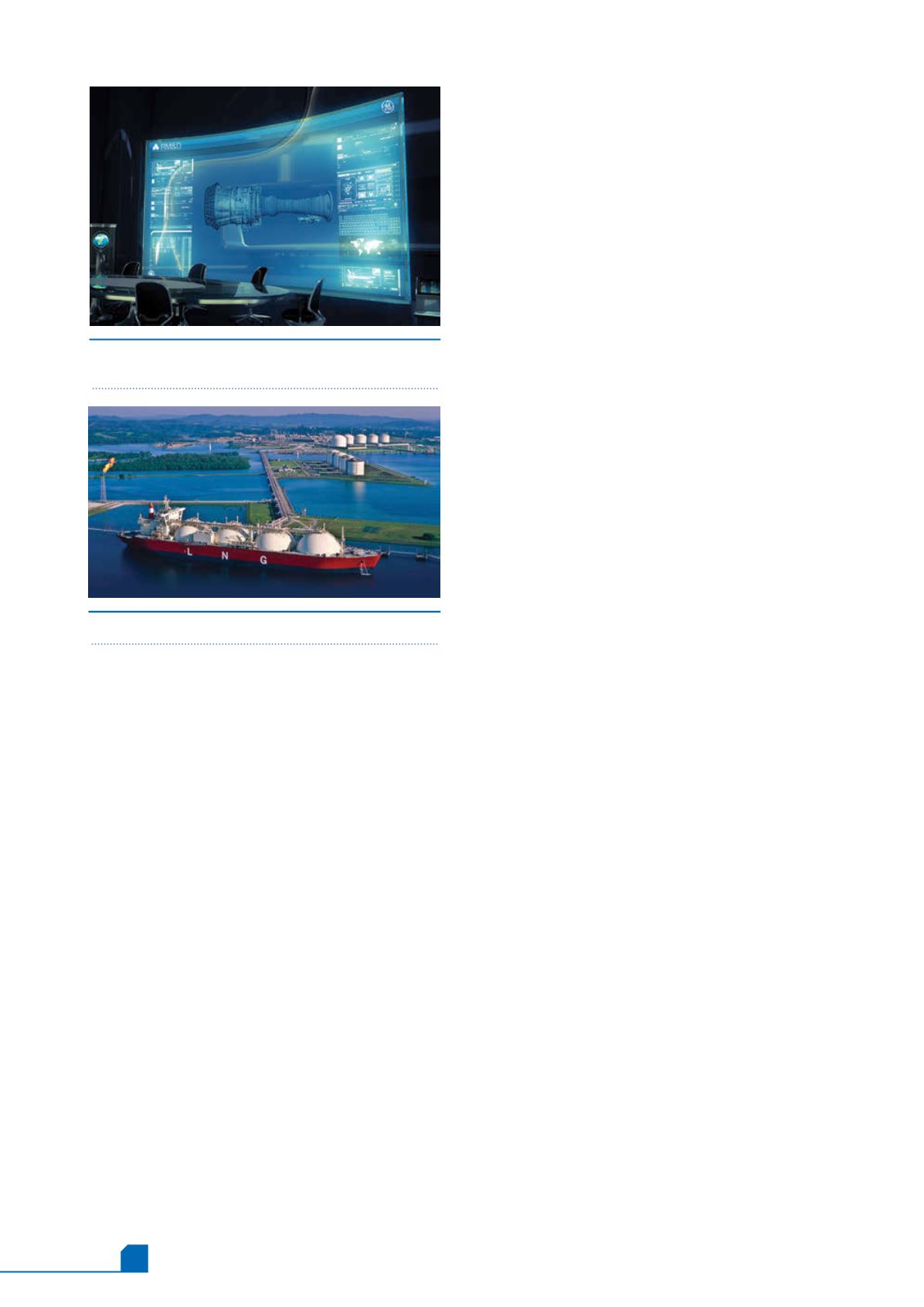
June
2016
HYDROCARBON
ENGINEERING
60
LNG terminal located in Indonesia’s Banggai Regency, capable
of producing 2 million tpy of LNG.
The industrial internet meets LNG
terminals
In a landmark deal with the consortium last year, worth
US$125 million, GE Oil & Gas signed a long term contract to
maintain and monitor GE equipment, as well as equipment
supplied by other original equipment manufacturers (OEMs) at
the terminal. This agreement is the first of its kind for
GE Oil & Gas and marks a broadened scope for digital solutions,
which will provide PT Donggi Senoro with insights across the
plant, as well as on the machinery originally manufactured by
GE Oil & Gas in Florence, Italy.
The groundbreaking contractual service agreement (CSA)
will see GE provide the strategically important Indonesian LNG
terminal with access to a cloud-based service, built on the
company’s unique Predix architecture, which will allow GE’s
diagnostic engineers, as well as rotating equipment engineers
within Donggi Senoro, to monitor how the machines perform in
real time.
This forms part of the company's digital solutions package,
which includes elements such as a dedicated diagnostic
engineer, monitoring and diagnostics, as well as more advanced
outcome-based offerings designed to optimise plant wide asset
performance management and maintenance operations.
Combined with standard services, such as replacement
parts, repairs, supervision and manpower, this is precisely the
kind of offering that will proliferate across the sector over the
next decade as companies increasingly tap into the latest
Figure 1.
A 3D model of one of GE Oil & Gas’ many
connected gas turbines.
Figure 2.
An LNG carrier waiting to take on its cargo.
technological advances and embed them at the heart of their
operations, in order to drive plant wide efficiencies and achieve
better overall visibility of plant performance.
The deal with DSLNG will see GE leverage its team of diagnostic
and software engineers to build a bespoke platform to interpret
data collected frommachines manufactured by other OEMs. This
data will be collected in the three GE Oil & Gas iCenters in Florence,
Houston and Kuala Lumpur, which together provide customers with
24/7 connection and insights.
A watershed moment for the industry
Assuming the task of monitoring rotating equipment supplied by
other manufacturers at an LNG terminal is a first for GE Oil & Gas’
Turbomachinery Solutions business and, thus, an important
milestone for the company. But it is also a watershed moment for
the oil and gas sector, as it signals greater future integration of
service maintenance and digital solutions.
Given the current market scenario and increased competition,
operators are looking to optimise their maintenance strategies.
Operators are looking to partner with companies to gain insight and
information, not only on an individual basis for manufactured
equipment, but also widening the scope to cover the full balance of
the plant and its constituent parts.
By monitoring the operation of machinery and equipment
provided by other suppliers, GE is establishing a newmodel for the
industry that has the potential to deliver a significant boost to
productivity. Monitoring the output and the performance of the
facility’s machines from a single interface allows DSLNG to identify
issues before they become acute problems in order to ensure better
safety and reliability.
The creation of an integrated system that optimises the flow
and quality of information to plant operators is a huge step forward
in terms of monitoring and diagnostics, and is one that has only
come to fruition through drawing on the company's engineering
expertise and knowledge of big data analytics.
For the first time, a stretched reliability target has been
embedded into the contract with DSLNG, meaning that GE will
guarantee the performance of all equipment, even on non-GE
equipment, including the plant’s electric motors and centrifugal
compressors. Moreover, the performance driven contract will also
include a bonus scheme linked to real customer production,
reinforcing the partnership concept that CSA contracts offer.
A new norm
Long termmaintenance deals, which cover multiple OEMs and
provide customers with plant or fleet wide insight, are going to
become more common for the oil and gas sector in the immediate
future. Against a challenging backdrop, the industry needs
confidence that their equipment will increase productivity from the
moment it is installed and brought online.
The DSLNG facility has huge geopolitical significance for
Indonesia, and is also a key part of the local economy in the Province
of Central Sulawesi. Most of the LNG from the facility is delivered to
markets in Japan and Korea, making it a crucial export for the country
and an important source of revenue, jobs and growth. That is why
DSLNG sets such an important precedent for other sectors of the
economy, by embracing the industrial internet and positioning itself
as a leading force for the digital era of modern industry.
This project joins an expanding number of export terminals that
are growing and maturing the global LNG industry. It is at the
forefront of two big trends that will reshape the world’s energy


